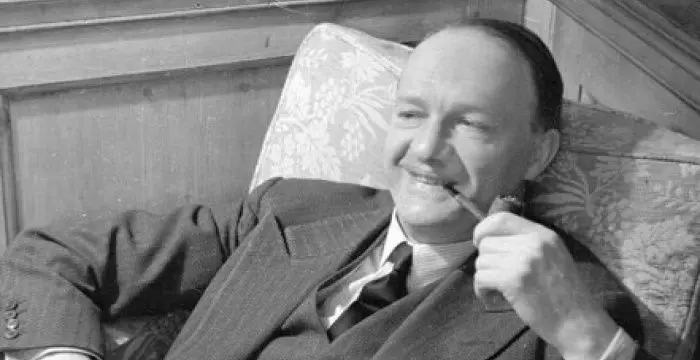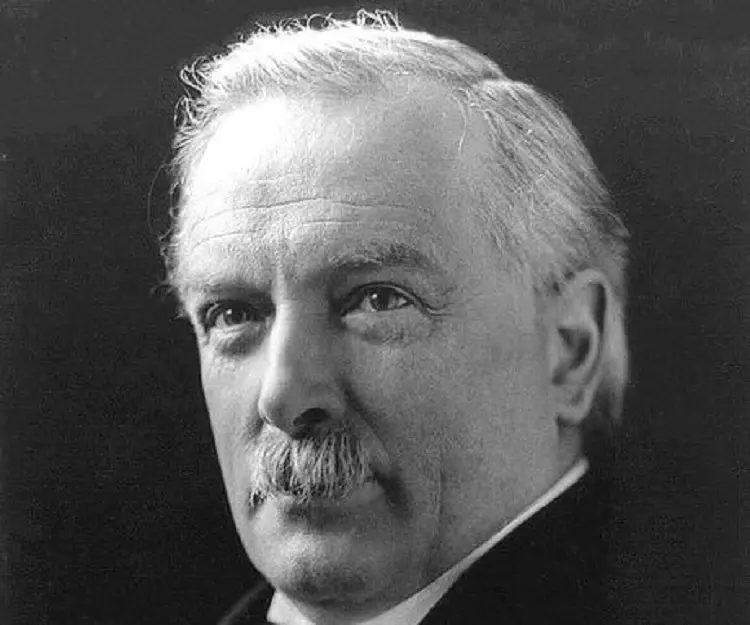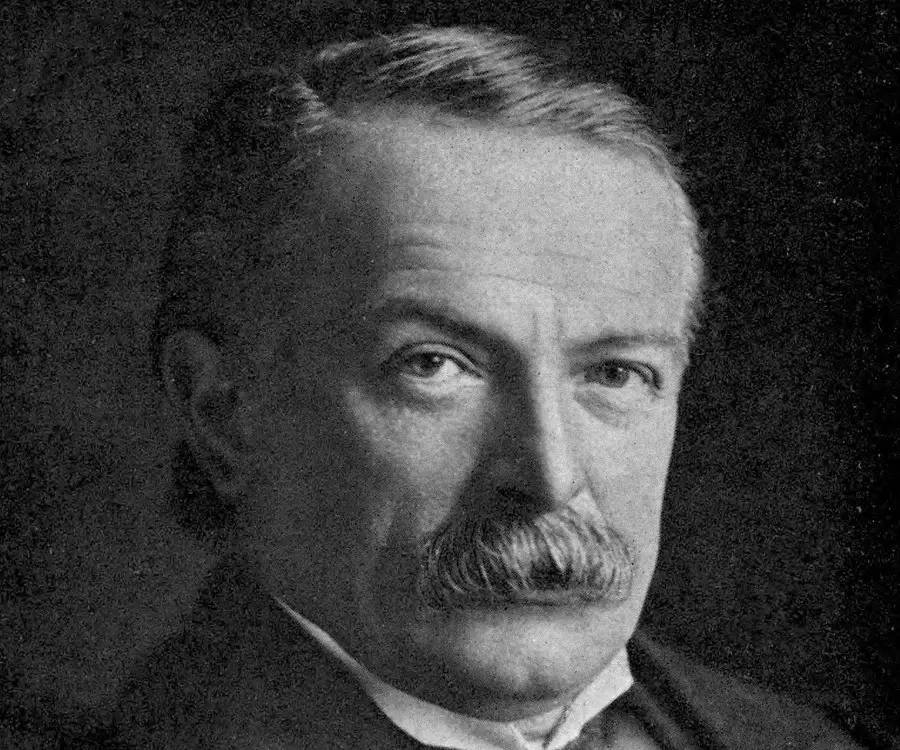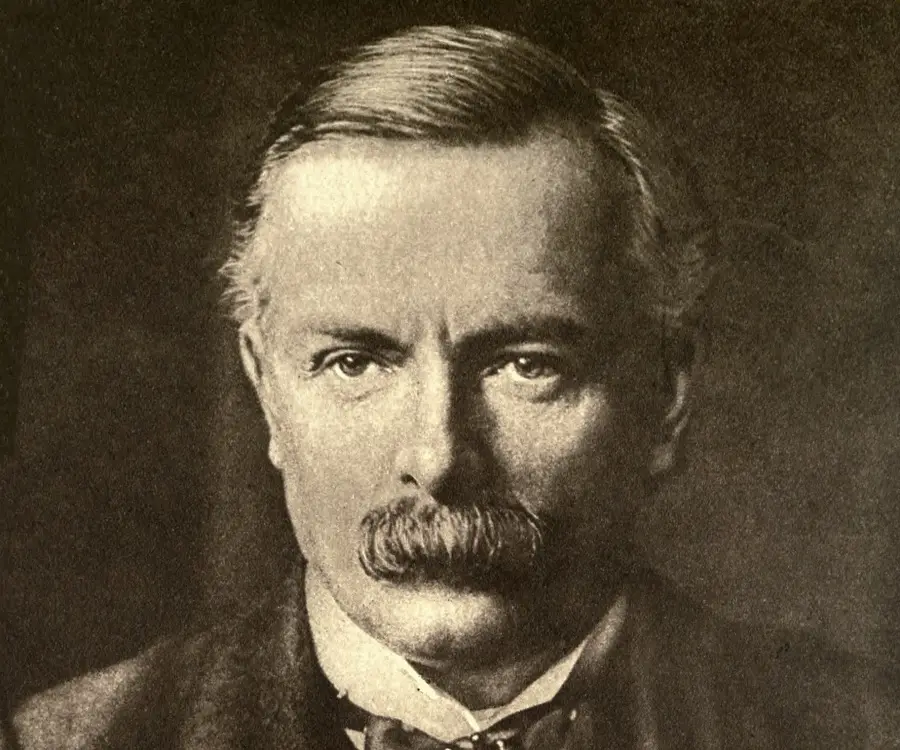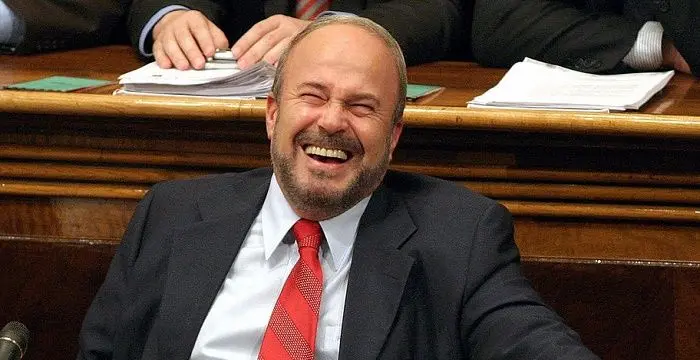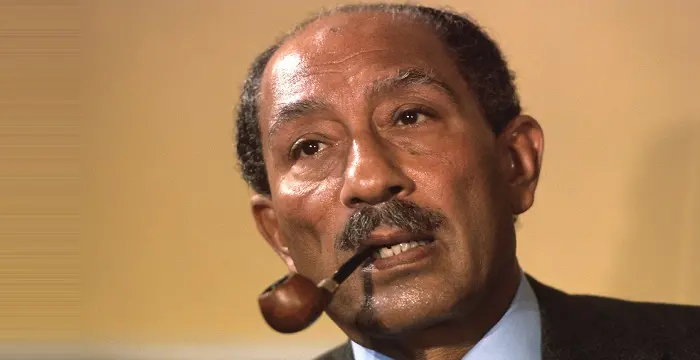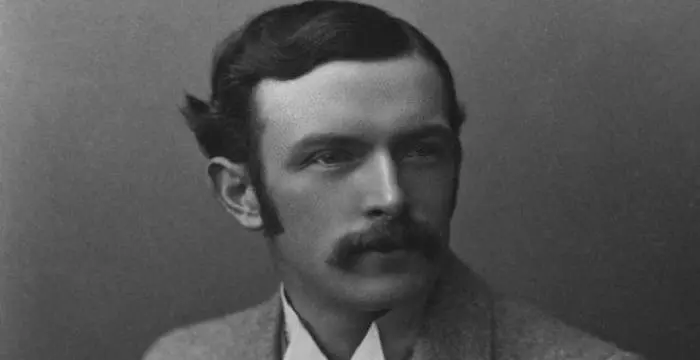
David Lloyd George - Former Chancellor of the Exchequer, Facts and Family
David Lloyd George's Personal Details
David Lloyd George was a British Liberal politician who served as the Prime Minister of the United Kingdom from 1916 to 1922
| Information | Detail |
|---|---|
| Birthday | January 17, 1863 |
| Died on | March 26, 1945 |
| Nationality | British, Welsh |
| Famous | Leaders, Political Leaders, Prime Ministers, Former Chancellor of the Exchequer |
| Spouses | Countess Lloyd-George of Dwyfor, Frances Lloyd George, Margaret Lloyd George |
| Childrens | 1st Viscount Tenby, Desmond Donnelly, Gwilym Lloyd George, Mair Lloyd George, Megan Lloyd George, Olwen Lloyd George, Richard Lloyd George Lloyd George |
| Universities |
|
| Founder / Co-Founder |
|
| Cause of death |
|
| Birth Place | Chorlton-on-Medlock |
| Born Country | United Kingdom |
| Political Ideology | Political party : (1890–1916 and 1924–1945) - Liberal, (1916–1924) - National Liberal |
| Religion | Christian Church (Disciples of Christ) |
| Gender | Male |
| Sun Sign | Capricorn |
| Born in | Chorlton-on-Medlock |
| Famous as | Former Chancellor of the Exchequer |
| Died at Age | 82 |
// Famous Former Chancellor of the Exchequer
Rab Butler
Richard Austen Butler was a British Conservative politician who rose to fame during his tenure as the Education Minister. This biography of Richard Austen Butler provides detailed information about his childhood, life, achievements, works & timeline
David Lloyd George's photo
Who is David Lloyd George?
David Lloyd George was a British Liberal politician who served as the Prime Minister of the United Kingdom from 1916 to 1922. He became the Prime Minister in the midst of the First World War, assuming great responsibilities at a highly turbulent period. Prior to becoming the Prime Minister he had served as the Chancellor of the Exchequer in the administration of the Prime Minister H. H. Asquith and had aided the Prime Minister in implementing several progressive social welfare reforms. Once the British Empire entered the First World War, Lloyd George was named the Minister of Munitions in a new department created after a munitions shortage. As the minister of the new department he helped to resolve labour problems, rationalized the supply system and increased the production. Hailed a hero for his wartime efforts in this position, he was made the Secretary of State for War in 1916. By this time he was growing increasingly critical of the Asquith administration and replaced Asquith as the Prime Minister with the support of the Conservative and Labour leaders. He proved to be popular as the wartime Prime Minister and was as popular as ever even after the war. However, he became involved in a scandal involving the selling of knighthoods and peerages in 1922, which along with the Chanak crisis led to a decline in his popularity, forcing him to resign.
// Famous Prime Ministers
Edi Rama
Edi Rama is the current Prime Minister of Albania. Check out this biography to know about his childhood, life, achievements, works & timeline.
Leo Varadkar
Cam Leo Varadkar is the current Taoiseach—the Prime Minister—of the Republic of Ireland. Check out this biography to know about his childhood, family life, achievements and other facts about his life.
Fatos Nano
Fatos Nano is an Albanian politician who served as Prime Minister of Albania for several times. Check out this biography to know about his childhood, life, achievements, works & timeline.
Childhood & Early Life
He was born as David George in England on 17 January 1863. His parents were William George, a teacher, and his wife Elizabeth. His father suffered from poor health and died when David was a young child.
His mother took the children and moved in with her brother, Richard Lloyd. His uncle had tremendous influence on the boy as he was growing up and David later on added his uncle's surname to become “David Lloyd George".
He studied to become a lawyer and passed his final examination in 1884.
Career
David Lloyd George set up his own legal practice and became a successful lawyer. He also became politically active during the late 1880s and entered the Parliament in 1890, winning a by-election at Caernarvon Boroughs.
His law practice thrived and in 1897 he merged his successful firm with that of Arthur Rhys Roberts under the name of Lloyd George, Roberts and Co.
He was appointed as President of the Board of Trade in 1905 by the Liberal Prime Minister, Sir Henry Campbell-Bannerman.
Upon Campbell-Bannerman’s death in 1908, H.H. Asquith became the Prime Minister and Lloyd George was named Chancellor of the Exchequer in the government of H. H. Asquith.
As the Chancellor of the Exchequer he aided the Prime Minister in creating the 1909 budget which was called the ‘People’s Budget’ since it provided for new welfare programmes that would be financed by imposing increased taxes on land, high incomes, luxuries, liquor and tobacco.
When the Shell Crisis of 1915 took place, the nation was dismayed at the news that the army was running short of arms and munitions. Lloyd George was made Minister of Munitions in a new department created after a munitions shortage. In this office he was successful in bringing up the production of munitions and earned much acclaim for this success.
By the mid 1910s the citizens were growing increasingly dissatisfied with the administration of H.H. Asquith who in spite of being a good leader in peacetime failed to be a good wartime Prime Minister.
Asquith was forced to resign from his post in 1916 and Lloyd George became the Prime Minister on 6 December 1916. Assuming such a powerful office in turbulent times, Lloyd George proved to be a capable wartime leader.
He set up a War Policy Committee with himself, Curzon, Milner, Law and Smuts (with Maurice Hankey as secretary), to discuss war strategies. He also set up a Manpower Committee with several of the same members.
The War Cabinet was very successful and the members made major political, military, economic and diplomatic decisions after thorough discussions. Rationing for meat, sugar and fats was imposed and the new system worked smoothly.
By the time the war moved towards a close, Lloyd George was at the height of his popularity. He passed several crucial legislations towards the end of the war, the most notable ones being Representation of the People Act 1918, the Education Act 1918, the Housing and Town Planning Act 1919, and Workmen’s Compensation (Silicosis) Act of 1918, all aimed towards the social welfare of people.
Even though he had been a much-loved Prime Minister for most of his tenure, he became embroiled in several controversies in 1922 which led to a drastic decline in his popularity, and forced him to resign. Although he remained active in politics even after stepping down as the Prime Minister, he didn’t enjoy the same success again.
Major Works
His becoming the Minister of Munitions in 1915 was a significant step in his political career. In this position he helped to increase the munitions output and thus boosted the national morale which was at a low point following the Shell Crisis of 1915.
As the Prime Minister he earned much respect and admiration for the welfare schemes he implemented towards the end of the war. He was instrumental in the passing of several acts including the Representation of the People Act 1918, Parliament (Qualification of Women) Act 1918, Education Act 1918, and Housing and Town Planning Act 1919 which were aimed at rebuilding the war-ravaged nation through social welfare schemes.
Awards & Achievements
He is the recipient of several decorations including Grand Cordon of Legion of Honour (France), Grand Cordon of Order of Leopold (Belgium), and Grand Cordon of Order of St Maurice and St Lazarus (Italy).
Personal Life & Legacy
David Lloyd George was very handsome and charming as a young man. He was involved in numerous love affairs before he finally tied the knot with Margaret Owen in 1888. The couple had five children and their marriage lasted till his wife’s death in 1941.
He married again in 1943 at the age of 80. His new wife was his longtime mistress Frances Stevenson whom he had first met in 1910.
He died of cancer on 26 March 1945, at the age of 82.
// Famous Political Leaders
Edi Rama
Edi Rama is the current Prime Minister of Albania. Check out this biography to know about his childhood, life, achievements, works & timeline.
Khalifa bin Zayed Al Nahyan
Sheikh Khalifa bin Zayed Al Nahyan is the current President of the United Arab Emirates (UAE). Check out this biography to know about his birthday, childhood, family life, achievements and fun facts about him.
Leo Varadkar
Cam Leo Varadkar is the current Taoiseach—the Prime Minister—of the Republic of Ireland. Check out this biography to know about his childhood, family life, achievements and other facts about his life.
David Lloyd George biography timelines
- // 17th Jan 1863He was born as David George in England on 17 January 1863. His parents were William George, a teacher, and his wife Elizabeth. His father suffered from poor health and died when David was a young child.
- // 1884He studied to become a lawyer and passed his final examination in 1884.
- // 1888 To 1941David Lloyd George was very handsome and charming as a young man. He was involved in numerous love affairs before he finally tied the knot with Margaret Owen in 1888. The couple had five children and their marriage lasted till his wife’s death in 1941.
- // 1890David Lloyd George set up his own legal practice and became a successful lawyer. He also became politically active during the late 1880s and entered the Parliament in 1890, winning a by-election at Caernarvon Boroughs.
- // 1897His law practice thrived and in 1897 he merged his successful firm with that of Arthur Rhys Roberts under the name of Lloyd George, Roberts and Co.
- // 1905He was appointed as President of the Board of Trade in 1905 by the Liberal Prime Minister, Sir Henry Campbell-Bannerman.
- // 1908Upon Campbell-Bannerman’s death in 1908, H.H. Asquith became the Prime Minister and Lloyd George was named Chancellor of the Exchequer in the government of H. H. Asquith.
- // 1909As the Chancellor of the Exchequer he aided the Prime Minister in creating the 1909 budget which was called the ‘People’s Budget’ since it provided for new welfare programmes that would be financed by imposing increased taxes on land, high incomes, luxuries, liquor and tobacco.
- // 1910 To 1943He married again in 1943 at the age of 80. His new wife was his longtime mistress Frances Stevenson whom he had first met in 1910.
- // 1915When the Shell Crisis of 1915 took place, the nation was dismayed at the news that the army was running short of arms and munitions. Lloyd George was made Minister of Munitions in a new department created after a munitions shortage. In this office he was successful in bringing up the production of munitions and earned much acclaim for this success.
- // 1915His becoming the Minister of Munitions in 1915 was a significant step in his political career. In this position he helped to increase the munitions output and thus boosted the national morale which was at a low point following the Shell Crisis of 1915.
- // 6th Dec 1916Asquith was forced to resign from his post in 1916 and Lloyd George became the Prime Minister on 6 December 1916. Assuming such a powerful office in turbulent times, Lloyd George proved to be a capable wartime leader.
- // 1918 To 1919By the time the war moved towards a close, Lloyd George was at the height of his popularity. He passed several crucial legislations towards the end of the war, the most notable ones being Representation of the People Act 1918, the Education Act 1918, the Housing and Town Planning Act 1919, and Workmen’s Compensation (Silicosis) Act of 1918, all aimed towards the social welfare of people.
- // 1918As the Prime Minister he earned much respect and admiration for the welfare schemes he implemented towards the end of the war. He was instrumental in the passing of several acts including the Representation of the People Act 1918, Parliament (Qualification of Women) Act 1918, Education Act 1918, and Housing and Town Planning Act 1919 which were aimed at rebuilding the war-ravaged nation through social welfare schemes.
- // 1922Even though he had been a much-loved Prime Minister for most of his tenure, he became embroiled in several controversies in 1922 which led to a drastic decline in his popularity, and forced him to resign. Although he remained active in politics even after stepping down as the Prime Minister, he didn’t enjoy the same success again.
- // 26th Mar 1945He died of cancer on 26 March 1945, at the age of 82.
// Famous Leaders
Edi Rama
Edi Rama is the current Prime Minister of Albania. Check out this biography to know about his childhood, life, achievements, works & timeline.
Tecumseh
Tecumseh was a Native American leader of the Shawnee clan. This biography profiles his childhood, life and timeline.
Khalifa bin Zayed Al Nahyan
Sheikh Khalifa bin Zayed Al Nahyan is the current President of the United Arab Emirates (UAE). Check out this biography to know about his birthday, childhood, family life, achievements and fun facts about him.
Anwar Sadat
Anwar Sadat was the third President of Egypt and has been awarded the Nobel Prize for his peace initiatives. To know more about his childhood, career, profile and timeline read on the following biography.
Leo Varadkar
Cam Leo Varadkar is the current Taoiseach—the Prime Minister—of the Republic of Ireland. Check out this biography to know about his childhood, family life, achievements and other facts about his life.
Swami Vivekananda
Swami Vivekananda was the chief disciple of Sri Ramakrishna, and was responsible for awakening India spiritually. Check this biography to know in detail about his life, profile and timeline.
David Lloyd George's FAQ
What is David Lloyd George birthday?
David Lloyd George was born at 1863-01-17
When was David Lloyd George died?
David Lloyd George was died at 1945-03-26
Where was David Lloyd George died?
David Lloyd George was died in Tŷ Newydd
Which age was David Lloyd George died?
David Lloyd George was died at age 82
Where is David Lloyd George's birth place?
David Lloyd George was born in Chorlton-on-Medlock
What is David Lloyd George nationalities?
David Lloyd George's nationalities is British, Welsh
Who is David Lloyd George spouses?
David Lloyd George's spouses is Countess Lloyd-George of Dwyfor, Frances Lloyd George, Margaret Lloyd George
Who is David Lloyd George childrens?
David Lloyd George's childrens is 1st Viscount Tenby, Desmond Donnelly, Gwilym Lloyd George, Mair Lloyd George, Megan Lloyd George, Olwen Lloyd George, Richard Lloyd George Lloyd George
What was David Lloyd George universities?
David Lloyd George studied at Llanystumdwy National School
Which company or organization was founded by David Lloyd George?
David Lloyd George was the founder/co-founder of UBM plc
What is David Lloyd George's cause of dead?
David Lloyd George dead because of Cancer
What is David Lloyd George's political ideology?
David Lloyd George's political ideology is Political party : (1890–1916 and 1924–1945) - Liberal, (1916–1924) - National Liberal
What is David Lloyd George's religion?
David Lloyd George's religion is Christian Church (Disciples of Christ)
What is David Lloyd George's sun sign?
David Lloyd George is Capricorn
How famous is David Lloyd George?
David Lloyd George is famouse as Former Chancellor of the Exchequer
